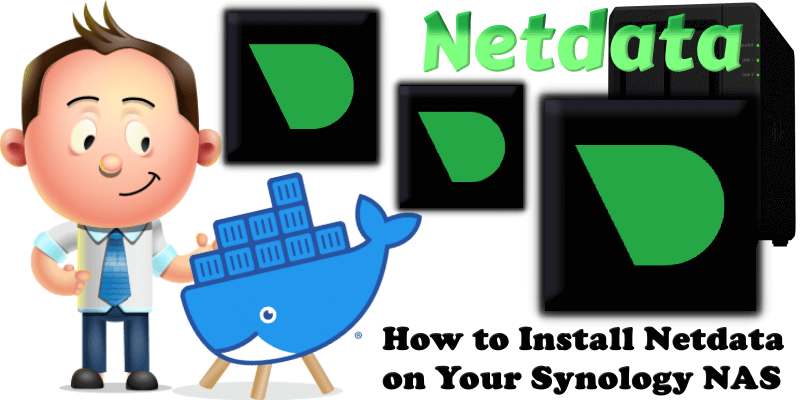
Netdata is distributed, real-time, performance and health monitoring for systems and applications. It is a highly optimized monitoring agent you install on all your systems and containers. Netdata provides unparalleled insights, in real-time, of everything happening on the systems it runs on (including web servers, databases, applications), using highly interactive web dashboards. It can run autonomously, without any third party components, or it can be integrated to existing monitoring toolchains (Prometheus, Graphite, OpenTSDB, Kafka, Grafana etc). Netdata is fast and efficient, designed to permanently run on all systems (physical & virtual servers, containers, IoT devices), without disrupting their core function. Netdata is free, open-source software and it currently runs smoothly on Synology NAS, Linux, FreeBSD, and MacOS. Are you tired of complicated guides? Do you want something quick and easy? Well today I will teach you how to install Netdata on your Synology NAS in less than 30 seconds directly through the Task Scheduler option. It’ll be over in a couple of seconds and it’s essentially child’s play. No terminal required for the installation.
STEP 1
Please Support My work by Making a Donation.
STEP 2
Install Container Manager via Synology “Package Center”. If you run an older DSM version (under 7.2), search for Docker instead of Container Manager.
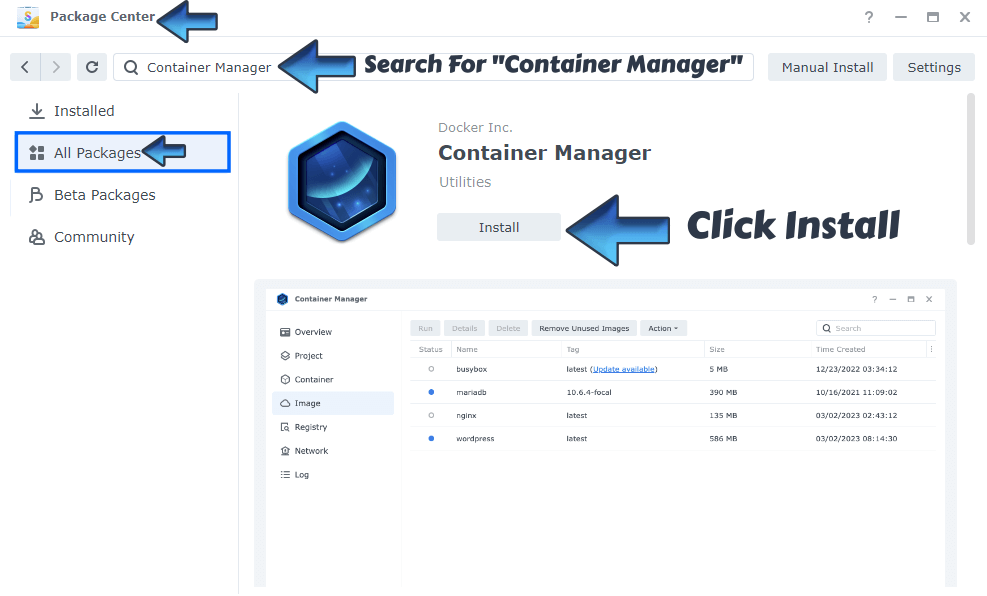
STEP 3
Go to File Station and open the docker folder. Inside the docker folder, create one new folder and name it netdata. Follow the instructions in the image below.
Note: Be careful to enter only lowercase, not uppercase letters.

STEP 4
Now create three new folders inside the netdata folder that you created at STEP 3 and name them cache, config, data. Follow the instructions in the image below.
Note: Be careful to enter only lowercase, not uppercase letters.
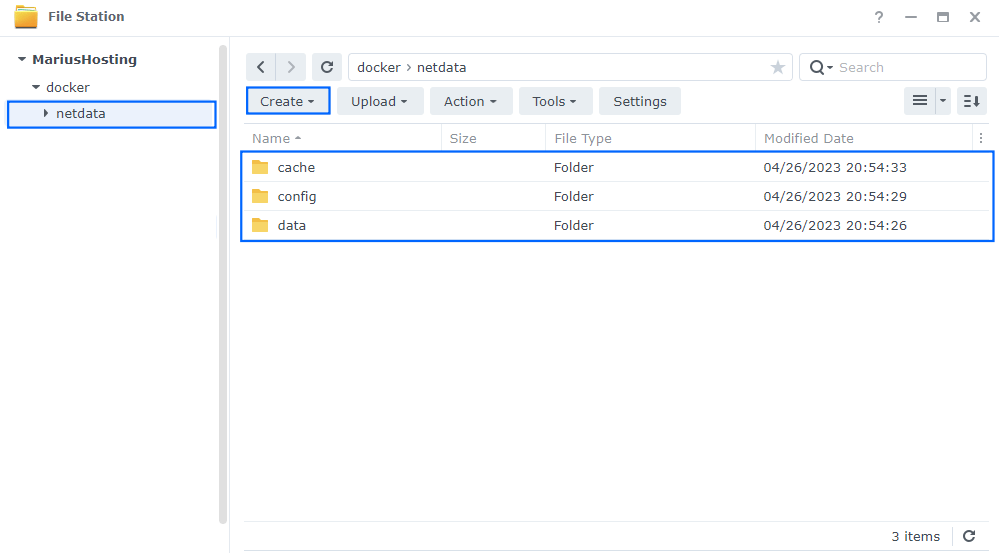
STEP 5
Right click on the netdata folder that you have previously created at STEP 3 then click Properties. Follow the instructions in the image below.
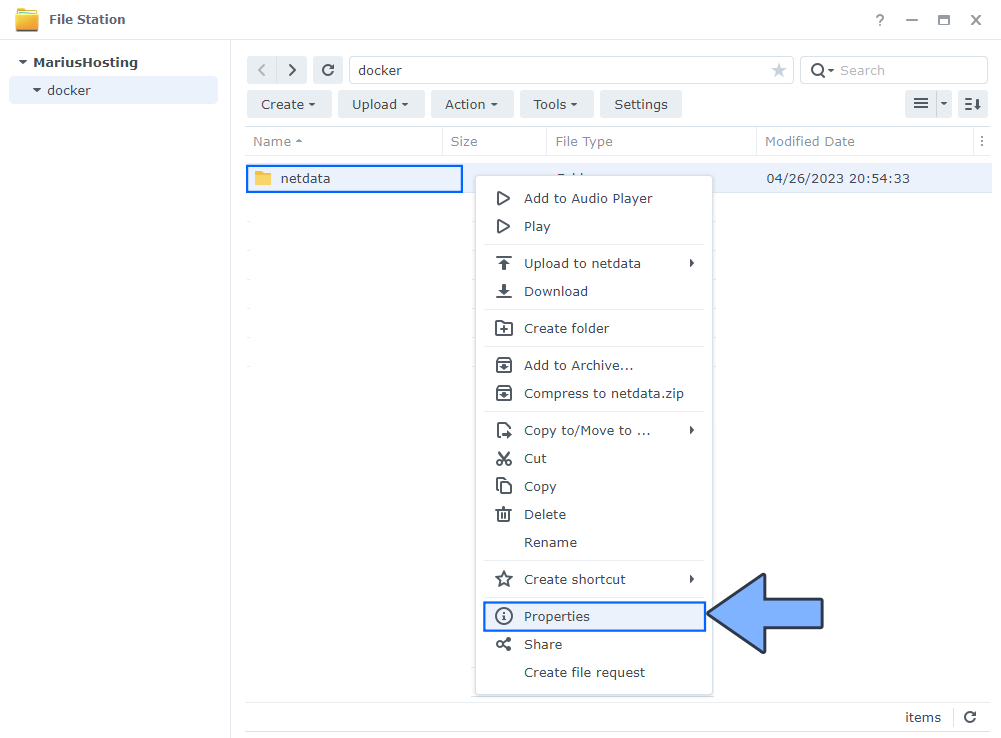
STEP 6
Go to the Permission tab then click Advanced options. From the drop-down menu choose “Make inherited permissions explicit“. Follow the instructions in the image below.
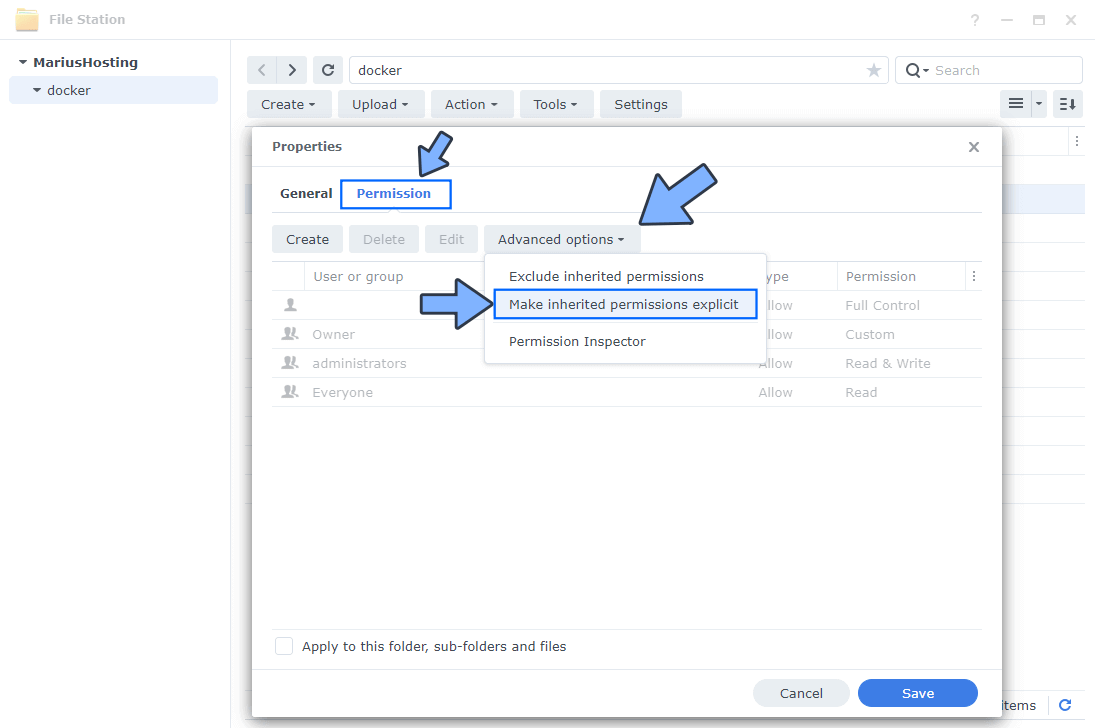
STEP 7
Select Everyone then click the Edit tab. Follow the instructions in the image below.
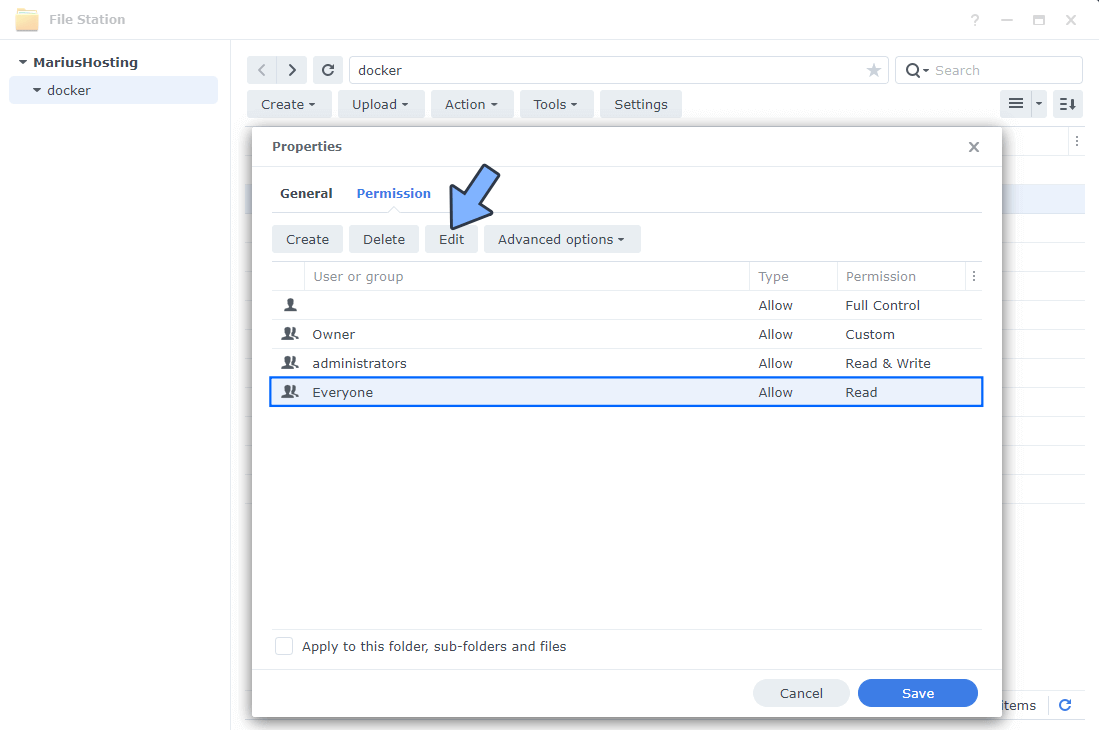
STEP 8
Check all Read and Write Permissions. Click Done. Follow the instructions in the image below.

STEP 9
After you click Done on STEP 8, check “Apply to this folder, sub-folders and files“. Click Save. Follow the instructions in the image below.
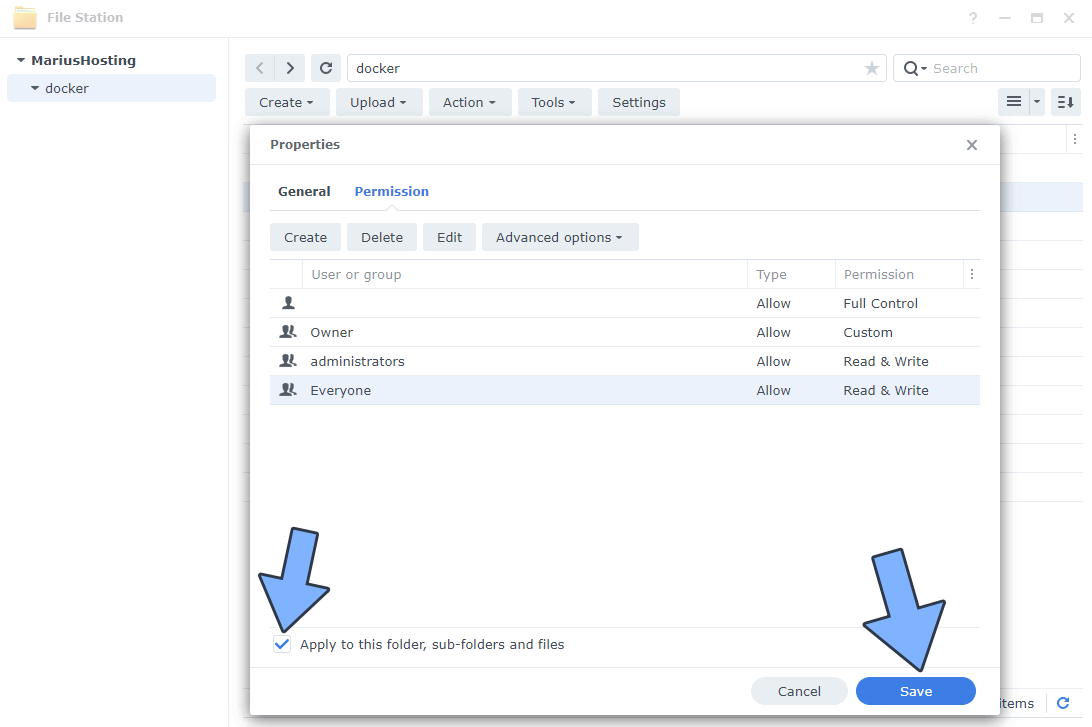
STEP 10
Go to Control Panel / Task Scheduler / Create / Scheduled Task / User-defined script. Follow the instructions in the image below.
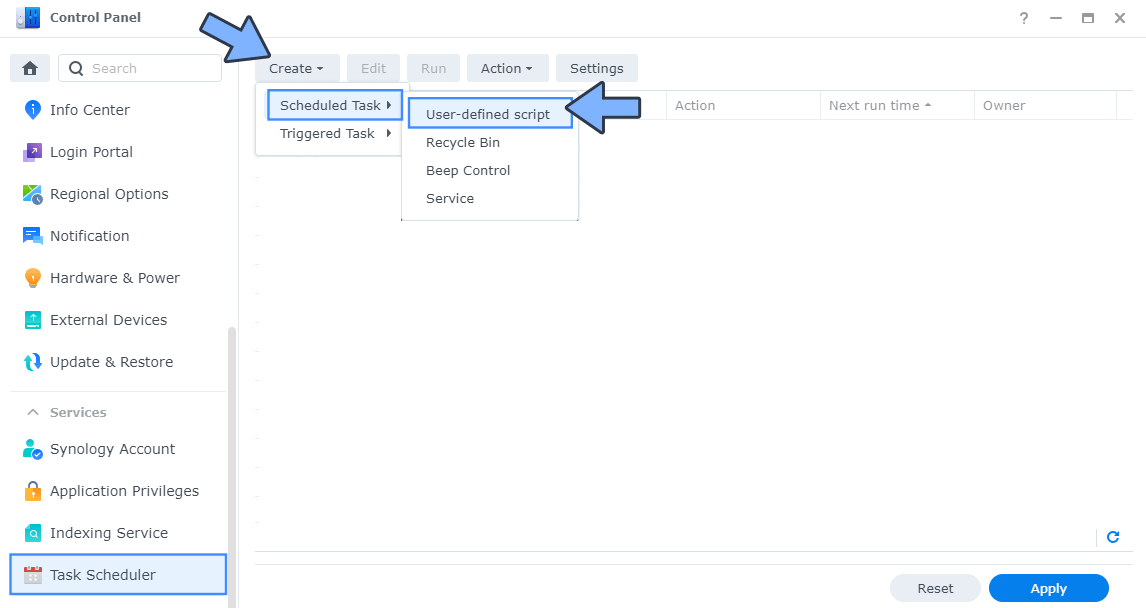
STEP 11
Once you click on User-defined script, a new window will open. Follow the instructions below:
- General: In the Task field type in “Netdata“. Uncheck the “Enabled” option. Select root User.
- Schedule: Select Run on the following date then select “Do not repeat“.
- Task Settings: Check “Send run details by email“, add your email then copy paste the code below in the Run command area. After that, click OK.
docker run -d --name=netdata \ -p 19999:19999 \ -v /proc:/host/proc:ro \ -v /sys:/host/sys:ro \ -v /var/run/docker.sock:/var/run/docker.sock:ro \ -v /volume1/docker/netdata/config:/etc/netdata \ -v /volume1/docker/netdata/data:/var/lib/netdata \ -v /volume1/docker/netdata/cache:/var/cache/netdata \ -e PUID=1026 \ -e PGID=100 \ --cap-add SYS_PTRACE \ --security-opt apparmor=unconfined \ --restart always \ netdata/netdata
Note: Before you paste the code above in the Run command area below, change the value numbers for PUID and PGID with your own values. (Follow my step by step guide on how to do this.)

STEP 12
After you click OK on STEP 11 a new warning pop up window will open. Click OK.
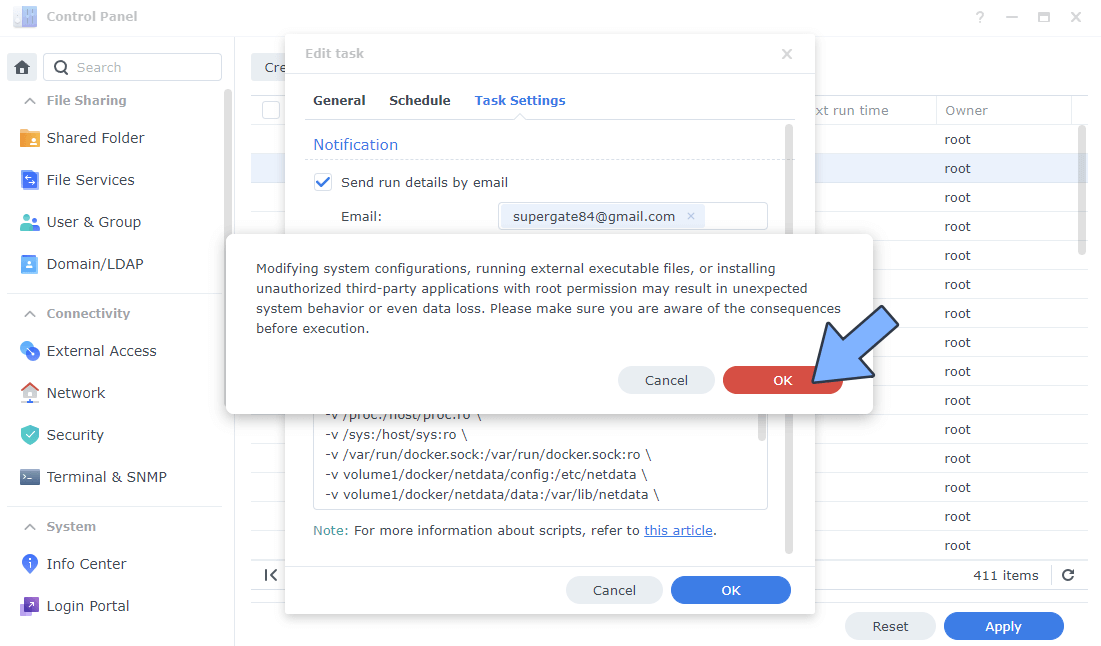
After you click OK, type in your DSM Password then click Submit. Follow the instructions in the image below.
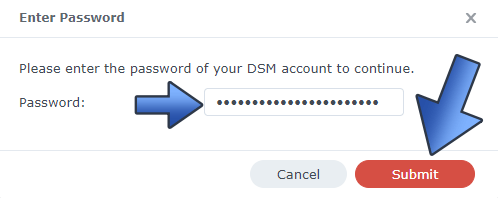
STEP 13
After you click Submit on STEP 12, select your “Install Netdata” Task then click the “Run” tab. You will be asked to run Install Netdata – click OK. Follow the instructions in the image below.
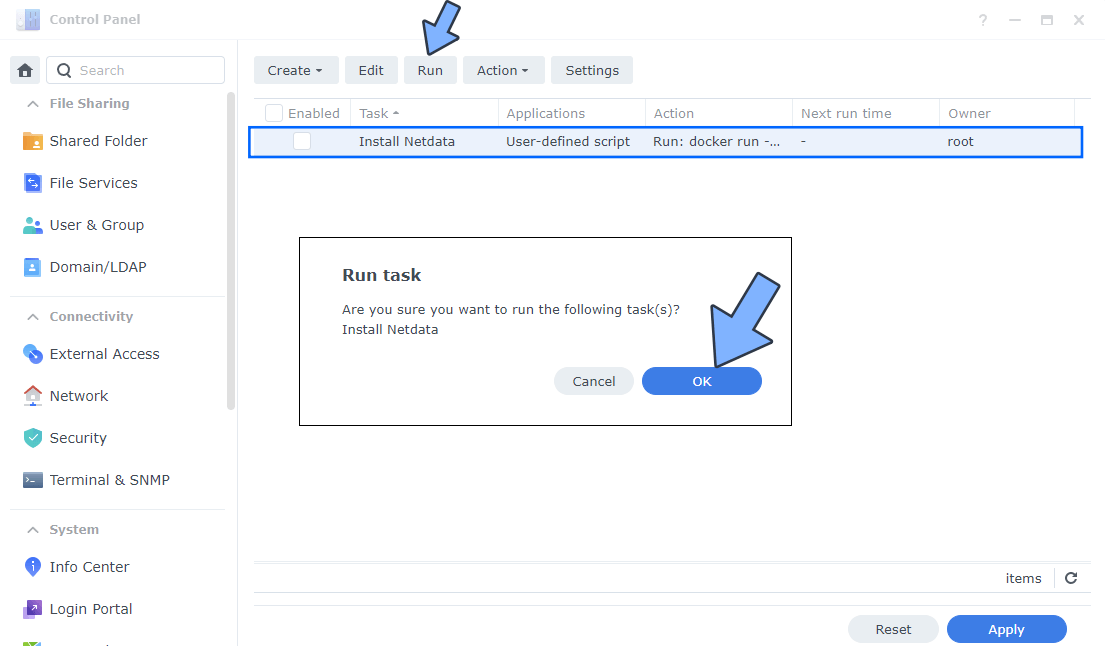
STEP 14
🟢Please Support My work by Making a Donation. Almost 99,9% of the people that install something using my guides forget to support my work, or just ignore STEP 1. I’ve been very honest about this aspect of my work since the beginning: I don’t run any ADS, I don’t require subscriptions, paid or otherwise, I don’t collect IPs, emails, and I don’t have any referral links from Amazon or other merchants. I also don’t have any POP-UPs or COOKIES. I have repeatedly been told over the years how much I have contributed to the community. It’s something I love doing and have been honest about my passion since the beginning. But I also Need The Community to Support me Back to be able to continue doing this work.
STEP 15
The installation process can take up to a few seconds. It will depend on your Internet speed connection. Now open your browser and type in http://Synology-ip-address:19999 Click Skip and use the dashboard anonymously. Follow the instructions in the image below.
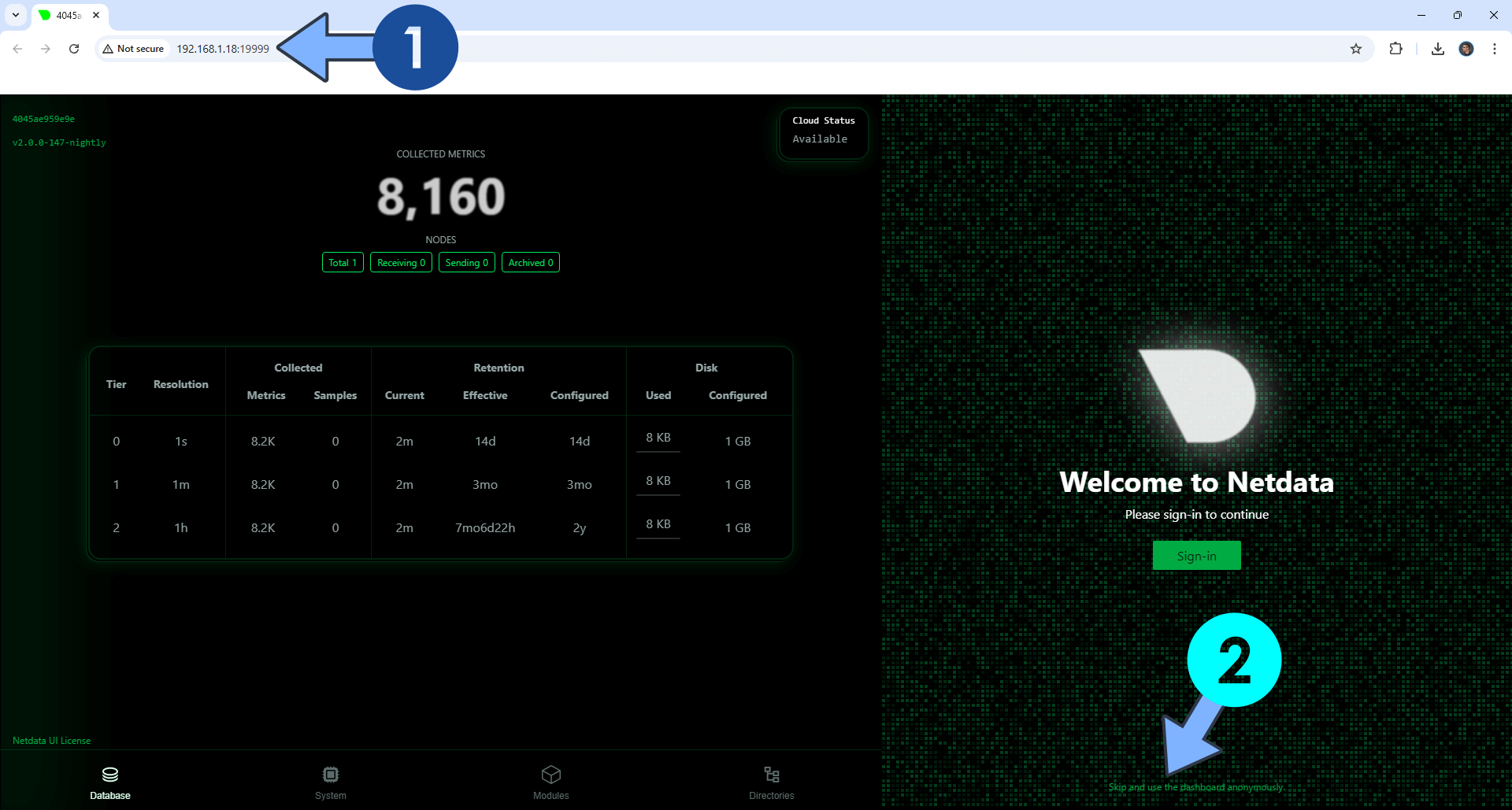
STEP 16
Your NAS metrics at a glance!
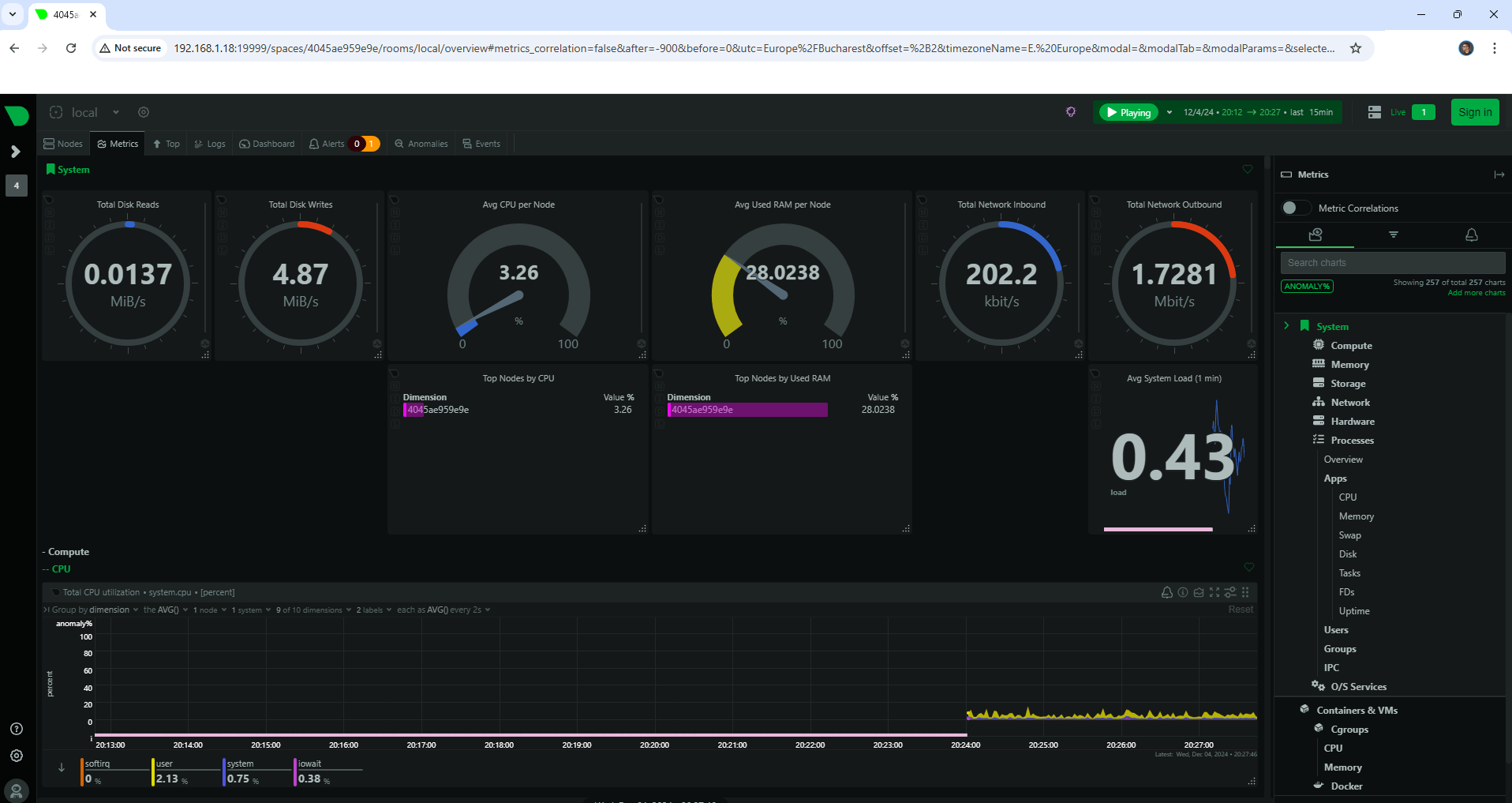
STEP 17
Netdata allows you to monitor the same parameters of Docker containers installed on your Synology NAS, all in real time.
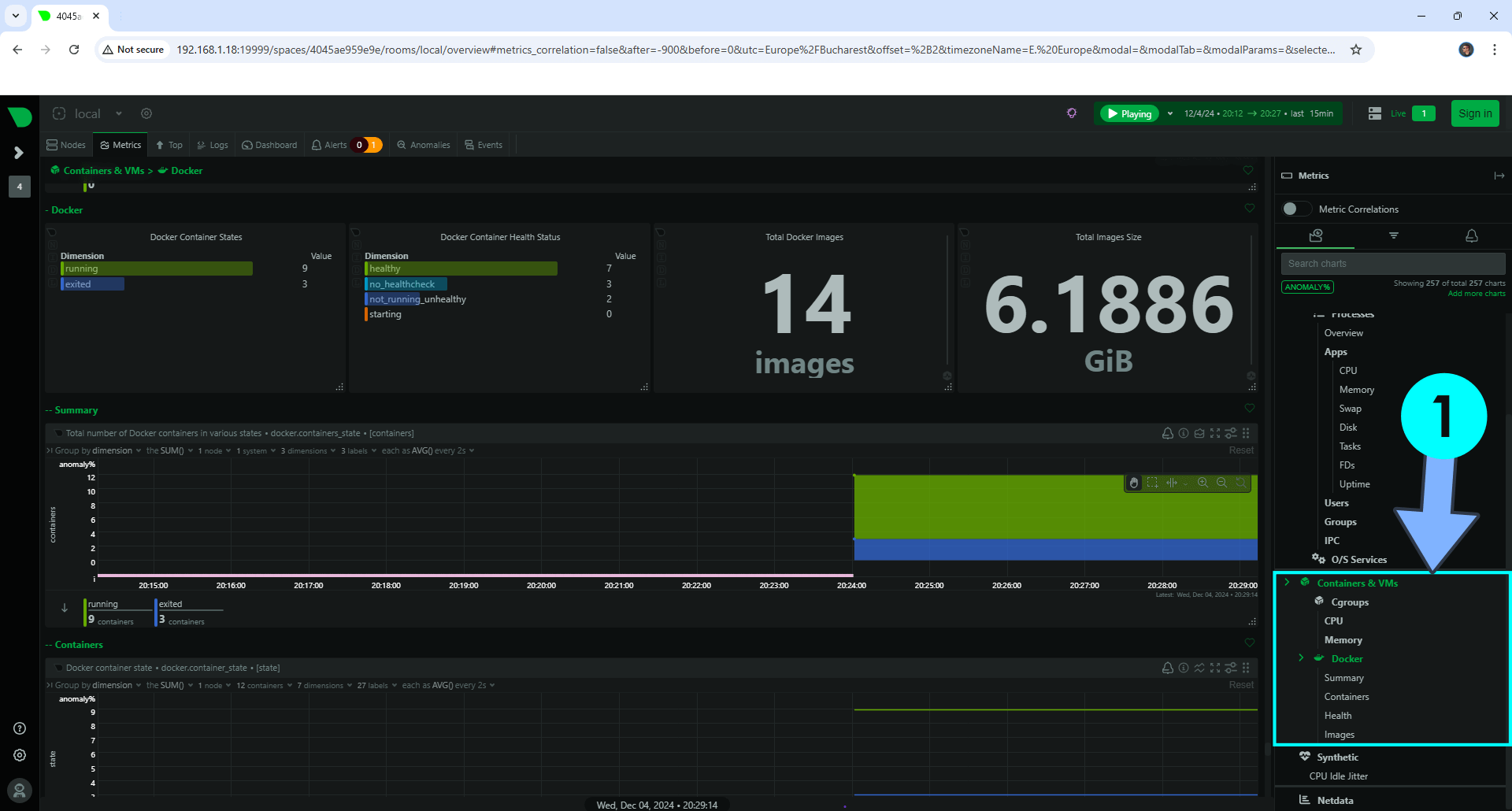
STEP 18
If you want to remove Netdata from your NAS, just delete the netdata docker container, the netdata image and the netdata folder. Once you create the netdata folder in your main docker folder, you can’t delete it manually. As a workaround, follow the instructions below to delete the netdata folder.
STEP 19
Go to Control Panel / Task Scheduler / Create / Scheduled Task / User-defined script. Follow the instructions in the image below.
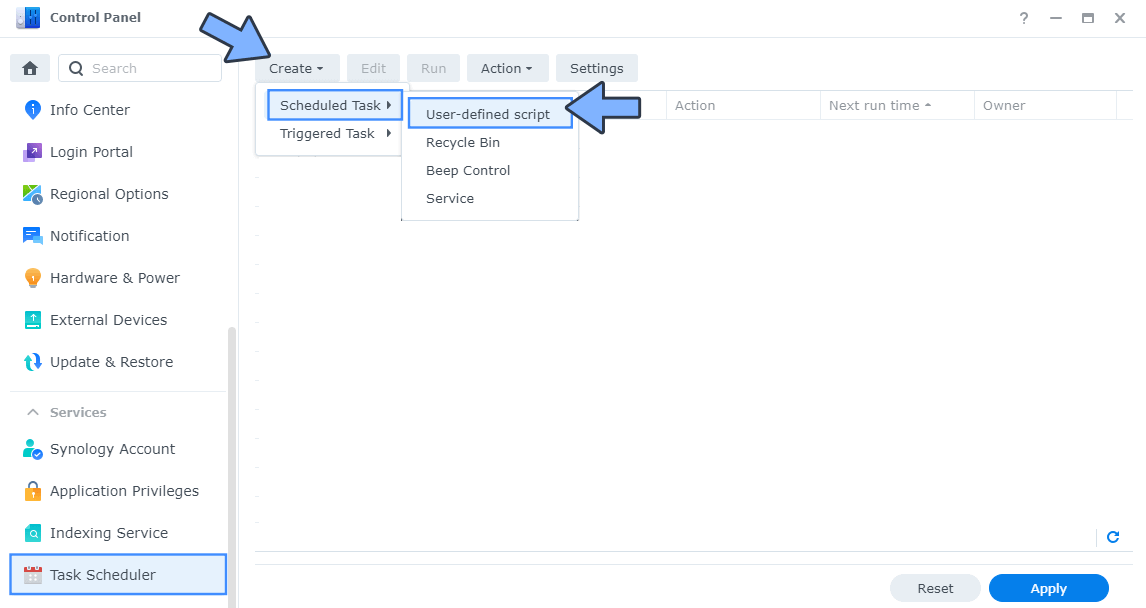
STEP 20
Once you click on User-defined script, a new window will open. Follow the instructions below:
- General: In the Task field type in “Remove Netdata Folder“. Uncheck the “Enabled” option. Select root User.
- Schedule: Select Run on the following date then select “Do not repeat“.
- Task Settings: Check “Send run details by email“, add your email then copy paste the code below in the Run command area. After that, click OK.
rm -r /volume1/docker/netdata
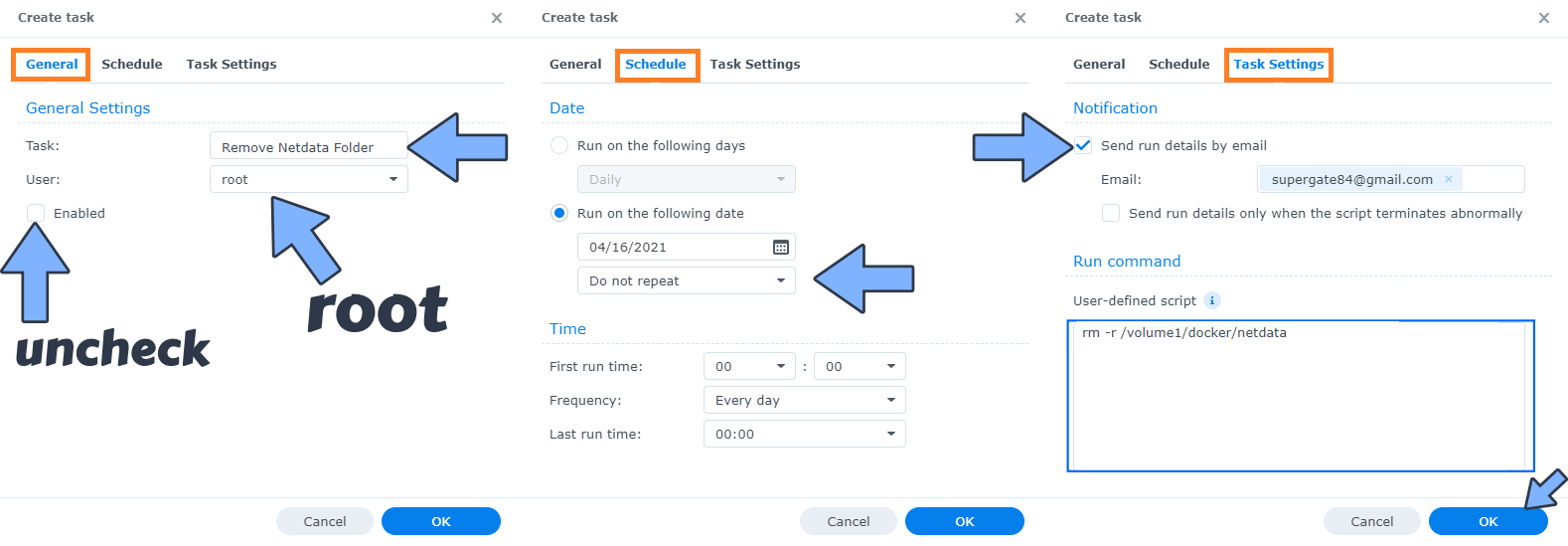
STEP 21
After you click OK on STEP 20 a new warning pop up window will open. Click OK.

After you click OK, type in your DSM Password then click Submit. Follow the instructions in the image below.

STEP 22
After you click Submit on STEP 21, select your “Remove Netdata Folder” Task then click the “Run” tab. You will be asked to run Remove Netdata Folder – click OK. Follow the instructions in the image below.
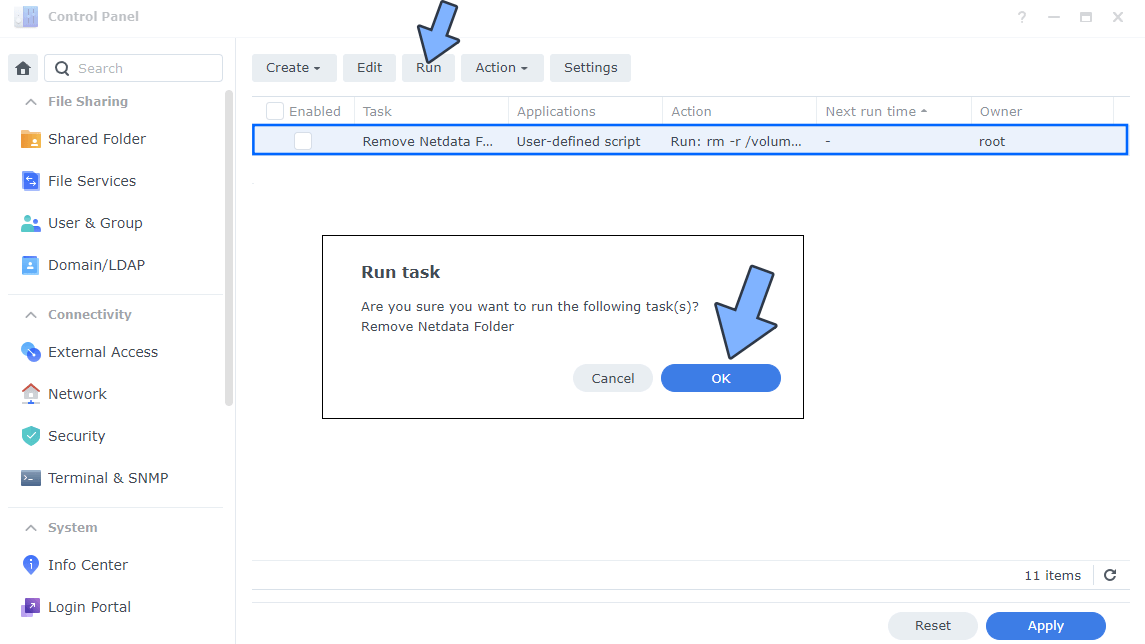
Enjoy Netdata!
If you encounter issues by using this container, make sure to check out the Common Docker issues article.
Note: If you want to run the Netdata container over HTTPS, check How to Run Docker Containers Over HTTPS. In order to make Netdata work via HTTPS, it’s mandatory to activate WebSocket.
Note: Can I run Docker on my Synology NAS? See the supported models.
Note: How to Back Up Docker Containers on your Synology NAS.
Note: Find out how to update the Netdata container with the latest image.
Note: How to Free Disk Space on Your NAS if You Run Docker.
Note: How to Schedule Start & Stop For Docker Containers.
Note: How to Activate Email Notifications.
Note: How to Add Access Control Profile on Your NAS.
Note: How to Change Docker Containers Restart Policy.
Note: How to Use Docker Containers With VPN.
Note: Convert Docker Run Into Docker Compose.
Note: How to Clean Docker.
Note: How to Clean Docker Automatically.
Note: Best Practices When Using Docker and DDNS.
Note: Some Docker Containers Need WebSocket.
Note: Find out the Best NAS Models For Docker.
Note: Activate Gmail SMTP For Docker Containers.
This post was updated on Friday / July 4th, 2025 at 3:02 AM
